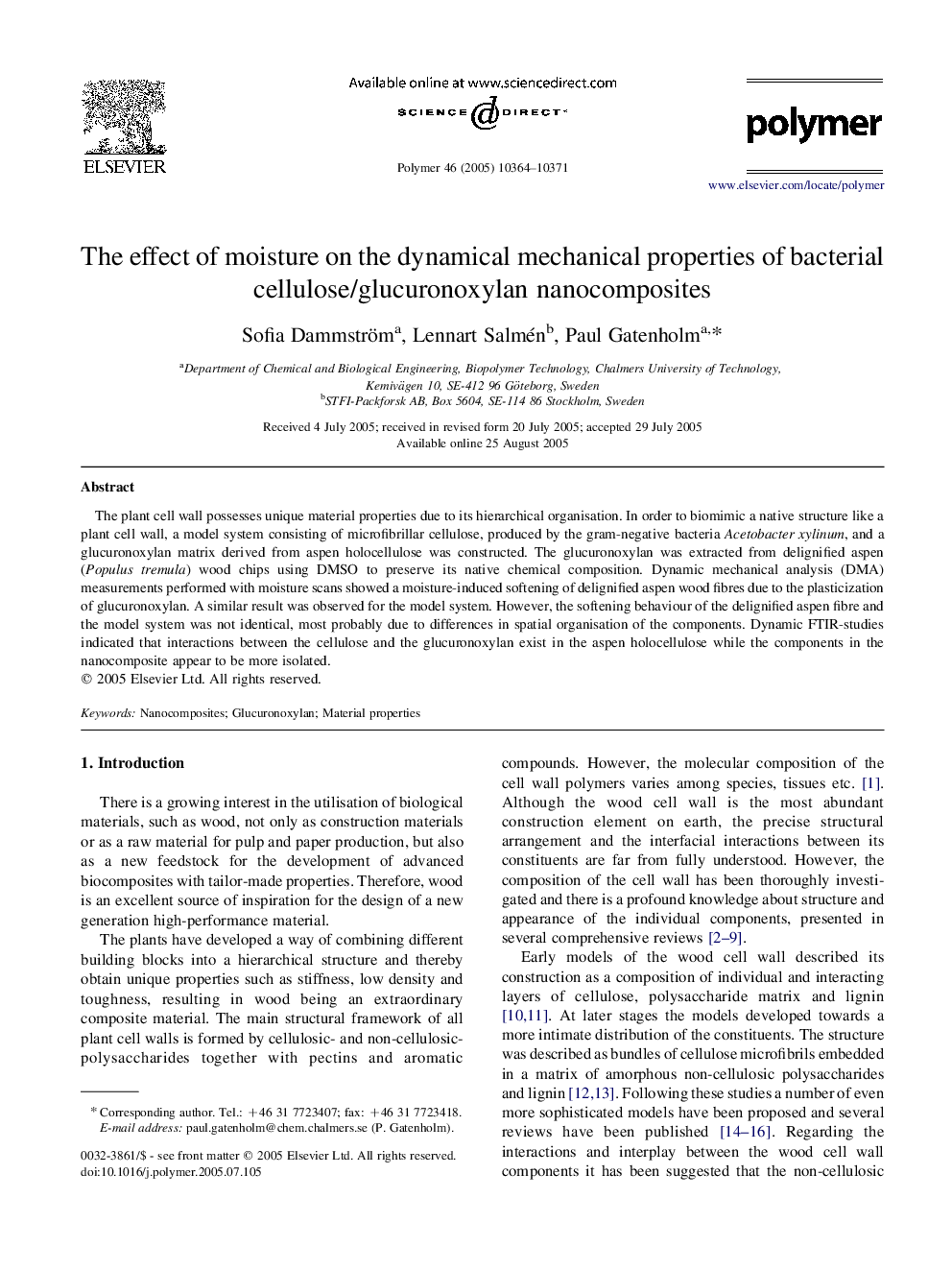| Article ID | Journal | Published Year | Pages | File Type |
|---|---|---|---|---|
| 5189908 | Polymer | 2005 | 8 Pages |
Abstract
The plant cell wall possesses unique material properties due to its hierarchical organisation. In order to biomimic a native structure like a plant cell wall, a model system consisting of microfibrillar cellulose, produced by the gram-negative bacteria Acetobacter xylinum, and a glucuronoxylan matrix derived from aspen holocellulose was constructed. The glucuronoxylan was extracted from delignified aspen (Populus tremula) wood chips using DMSO to preserve its native chemical composition. Dynamic mechanical analysis (DMA) measurements performed with moisture scans showed a moisture-induced softening of delignified aspen wood fibres due to the plasticization of glucuronoxylan. A similar result was observed for the model system. However, the softening behaviour of the delignified aspen fibre and the model system was not identical, most probably due to differences in spatial organisation of the components. Dynamic FTIR-studies indicated that interactions between the cellulose and the glucuronoxylan exist in the aspen holocellulose while the components in the nanocomposite appear to be more isolated.
Related Topics
Physical Sciences and Engineering
Chemistry
Organic Chemistry
Authors
Sofia Dammström, Lennart Salmén, Paul Gatenholm,
